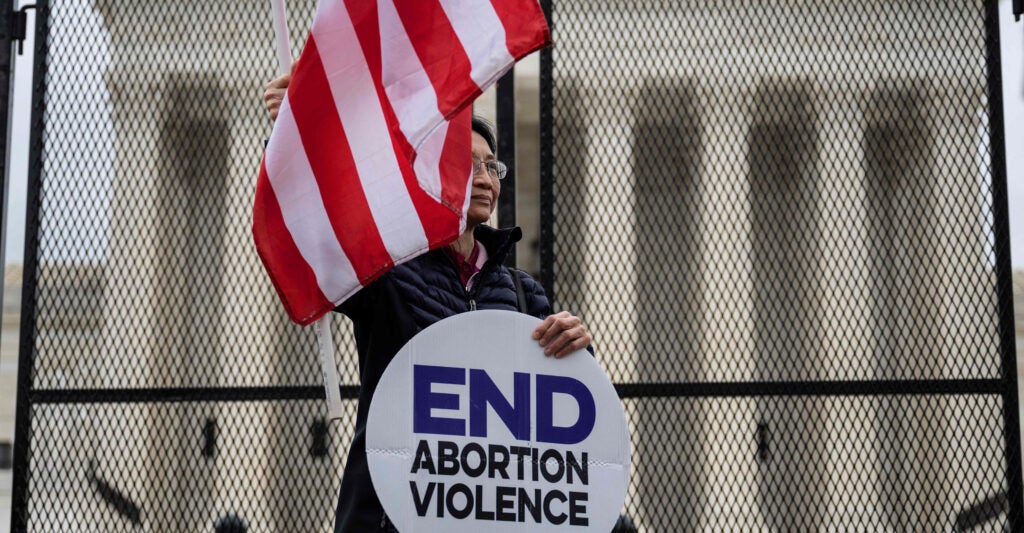The Senate on Wednesday is expected to vote on whether to end debate on S 4132, the Women’s Health Protection Act of 2022.
Even though a similar vote on the virtually identical HR 3755 failed on Feb. 28, Senate Majority Leader Chuck Schumer, D-N.Y., quickly set up this repeat in the wake of the leaked first draft of the Supreme Court’s opinion in Dobbs v. Jackson Women’s Health Organization.
If the position in that draft holds, the court will overturn its decisions in Roe v. Wade and Planned Parenthood v. Casey, which created and continued the right to abortion.
The Women’s Health Protection Act would prohibit any government anywhere from doing anything that could, even potentially, reduce the number of abortions from actually taking place. Not only that, it would require every government everywhere to repeal any statutes, regulations, or anything else that may already be on the books that could potentially have that effect.
Abortion advocates claim the Women’s Health Protection Act would merely “codify” those Supreme Court decisions, protecting the right to abortion by legislation should its constitutional protection vanish.
That claim is false in numerous ways.
First, Congress and the Supreme Court are not simply interchangeable, as if either can provide a second bite at the political apple when the other bows out. In Roe and Casey, the court claimed that the right to abortion resides in the 14th Amendment, a position that even scholars who support that result cannot defend.
The bill refers to a “constitutional right to terminate a pregnancy,” but such a thing will not exist after Dobbs corrects the Roe and Casey error. In other words, while the 14th Amendment gives Congress authority to enforce such a right if it existed, after Dobbs there will be nothing for Congress to enforce.
Second, Congress does not have authority to enact this legislation. Supporters, of course, claim that Congress’ power to regulate interstate commerce allows it to do so because the provision of abortion services involves interstate commerce.
The Women’s Health Protection Act, however, does not regulate abortion services; it attempts to regulate how state and local governments do so. That distinction makes all the constitutional difference. Under the 10th Amendment, Congress may exercise only the powers enumerated in the Constitution itself; the states may exercise the rest.
This system of federalism does not allow Congress to dictate how state and local government exercise the powers that the Constitution reserves for them.
Third, the abortion policy represented by this bill would be far more extreme than what the Supreme Court imposed in Roe, which in turn was more extreme than anything the common law or statutes had ever established.
The Roe policy of virtually unrestricted abortion is more permissive than all but seven other nations anywhere in the world. And a large majority of Americans have consistently said that more of the abortions that Roe legalized should, in fact, be illegal.
The Women’s Health Protection Act is more extreme than Roe in two ways.
In Roe, for example, the Supreme Court recognized that the “developing young in the human uterus” makes abortion “inherently different” from other privacy rights. The court referred to the unborn “child,” “prenatal life,” “fetus,” “embryo,” and “unborn children.” These were not simply casual or random references.
The state, then-Justice Harry Blackmun wrote, has an “important and legitimate interest” in protecting human beings before birth. Only four years after Roe, the Supreme Court held that the right to abortion “implies no limitation on the authority of a State to make a value judgment favoring childbirth over abortion, and to implement that judgment” through certain kinds of legislation.
The Women’s Health Protection Act repudiates, rather than codifies, that critical element of Roe v. Wade. The bill, in fact, tries to erase or deny any suggestion that a second human being exists at all. It even drops the definition of “abortion” found in previous versions of the Women’s Health Protection Act because that definition referred to “a live birth” (of what?) and a “dead fetus” (that must once have been alive).
If it were constitutional and could be enacted into law, the Women’s Health Protection Act would prohibit, and require repeal of, 11 categories of abortion regulations and any that might be “similar” to them—guaranteeing that the courts would be pulled right back into the abortion business.
Those include anything that might even “delay … some patients” from getting an abortion, “indirectly” increase the cost of doing so (whatever that means), or even that necessitates a trip to the doctor’s office.
The Women’s Health Protection Act would also outlaw other measures that the Supreme Court has already upheld after Roe. In Casey, for example, the court upheld a parental consent requirement for minors seeking abortion, recognizing the state’s “important and legitimate interest” in the welfare of minors.
The Women’s Health Protection Act , in contrast, lists “parental involvement laws (notification and consent)” among measures that “complicat[e] access to … abortion services.”
When all is said and done, the Women’s Health Protection Act would, retroactively and prospectively, prevent any government, at any level, from enacting or enforcing “any law, rule, regulation, standard, or other provision having the force and effect of law that conflicts” with any provision of the act.
No one with any knowledge of our system of government, let alone senators who have sworn to uphold and defend the Constitution, could possibly think that Congress has the authority to impose such a radical policy.
Have an opinion about this article? To sound off, please email letters@DailySignal.com and we’ll consider publishing your edited remarks in our regular “We Hear You” feature. Remember to include the url or headline of the article plus your name and town and/or state.
